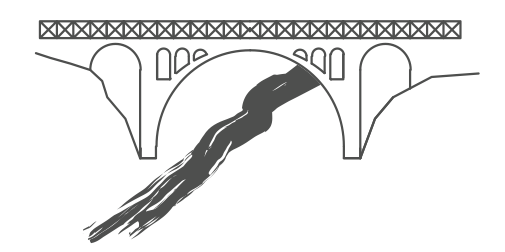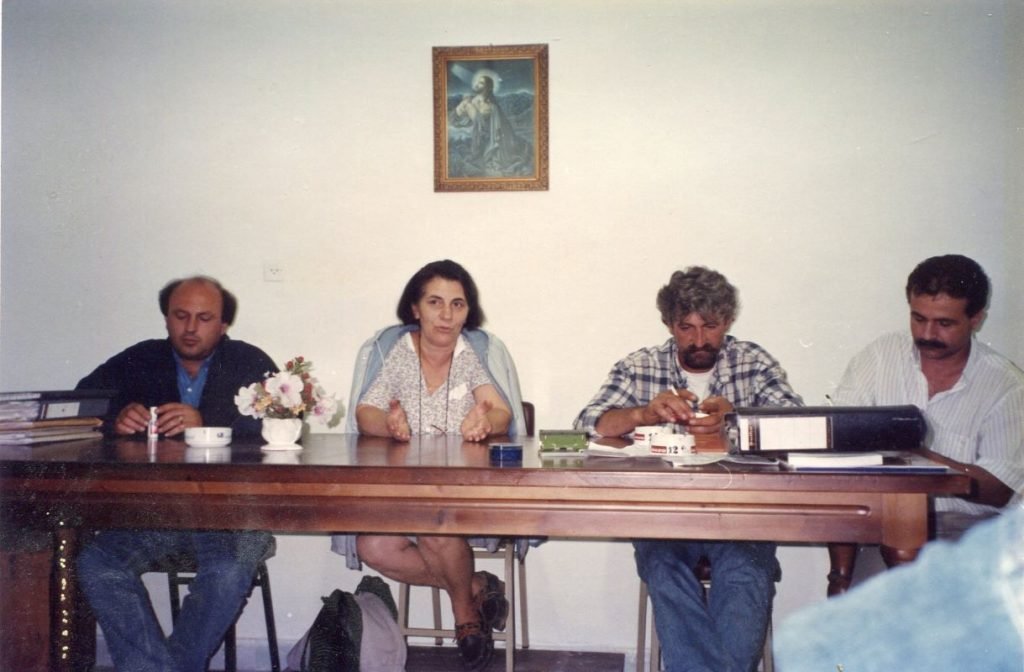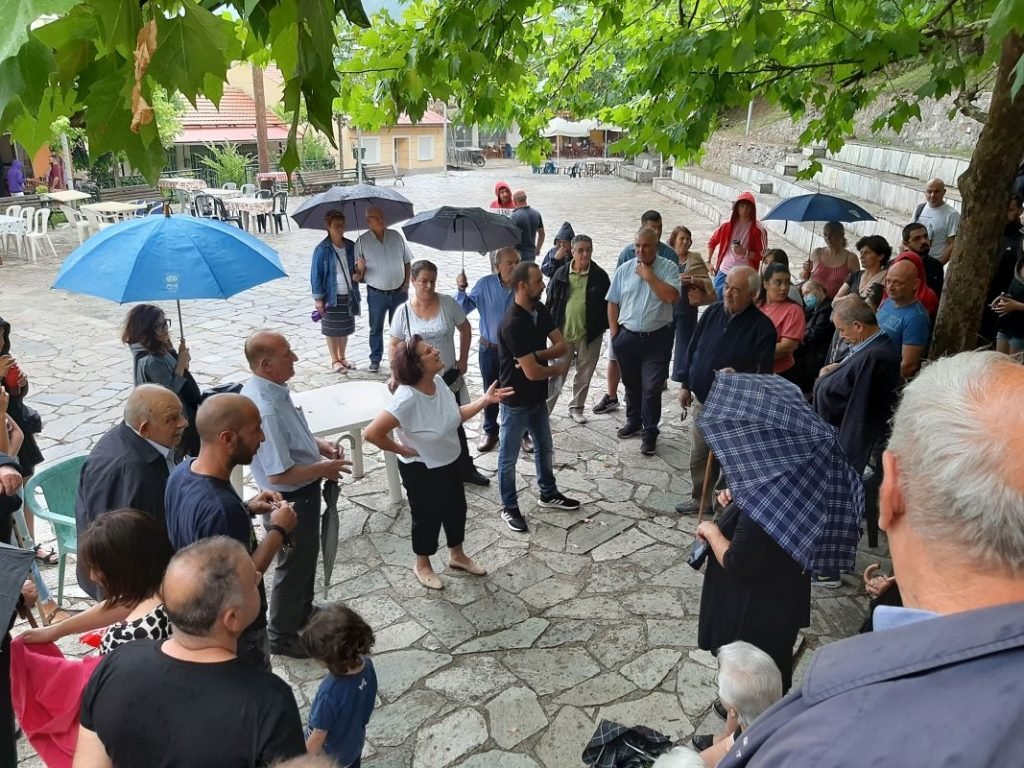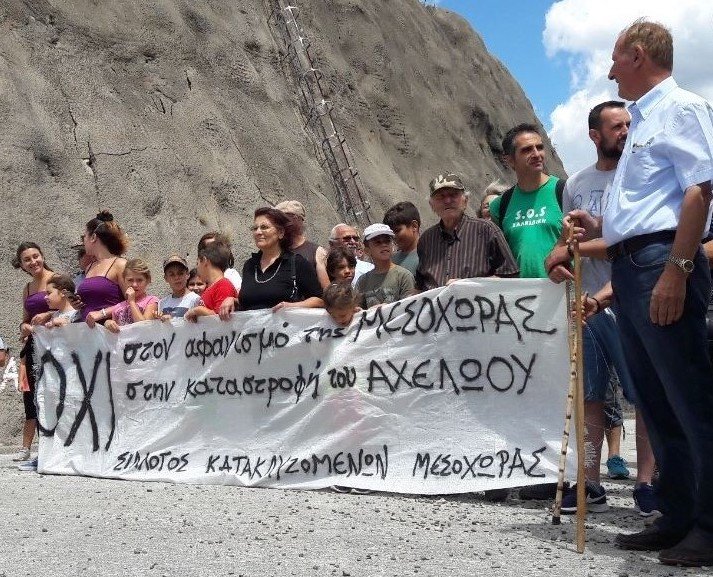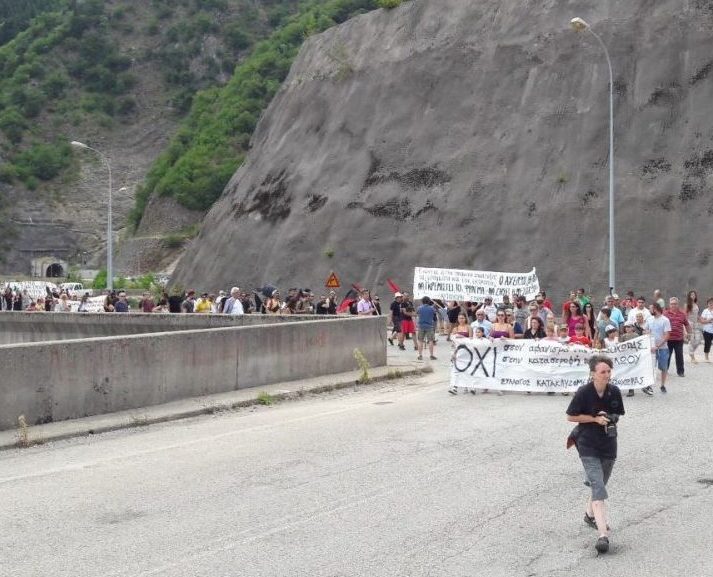Establishment & History
In a historic village of Pindos – Mesochora in Trikala -, reborn from its ashes following the German invasion of 1943, a village of unique natural beauty with a number of active public services (Health center – Hospital, Hellenic Telecommunications Organisation (OTE), Post Office – Savings Office (ELTA), Police Station, Nursery – Elementary School – Secondary School and Boarding School), the State presented the Mesochora Dam as a developmental project that would benefit the people and the area. In Spring 1985, a group of State representatives, with the participation of D. Papamantelou – the then Head of the Public Power Corporation, visited the village and announced the construction of a 60m damn, withholding from the residents the true magnitude of the project. Without further notice, public discussion or environmental study, the PPC soon proceeded with the construction works. At first, the community authorities of Mesochora and other near-by villages did not object, and works progressed normally.
One morning in the summer of 1987, Takis Halimourdas, the then president of the Mesochora Community Council announced from the loudspeakers the diversion of the Acheloos River to the tunnel and the construction of a dam by the PPC; he invited the residents to a general meeting at the village square at 7pm that evening. Niki-Eleftheria Oikonomou-Evangelidi requested him to take immediate action so to prevent any more valuable time being lost. When he refused, she rang the church bell herself, calling the villagers to a meeting that same moment, thus marking the start of the fight to save Mesochora and Acheloos.
Therefore, that summer, following a general meeting, the residents sent a letter to the PPC asking for information about the actual height of the dam and the project details. From the company’s response a few months later, they were apprised for the first time of the details which were quite different to what they had in mind. The dam would be 150m high with the water level set at 755m (currently, at 785m.), submerging ⅔ of the village. It was now becoming clear that the project would be associated with the diversion of the Acheloos River to the Thessalian Plain; clarifications were also given that expropriations would take place with compensation set by the courts.
In view of the looming danger for the village, and realizing the magnitude of the natural disaster and the State’s intention to lead the village to its decline, the residents of the areas to be submerged created an association. Thus, in 1988, the Association of the flood-damaged home owners of Mesochora: “the Acheloos” was created on the initiative of Georgios Karageorgos, son of Aristotle. His was a very important initiate for the situation the area was found in at the time – and indeed for the many years that followed during which the village was held hostage to developments. Karageorgos was president of the Association from the date of its establishment until 27.5.1990. Then, Niki-Eleftheria Oikonomou-Evangelidi became president, shaping the role and course of the Association, establishing cooperation with all ecological organizations (Ornithological Society, WWF HELLAS, Greenpeace, Hellenic Society for Environment and Culture, Chamber of Environment), as well as with the Community of Mesochora and especially with its president Mr. Panagiotis Kotronis. Also, the Association worked with the Associations of Mesochorians of Athens, Trikala and Farsala, the Ecological Movement of Volos, Trikala and Larissa, the Pan-Thessalian Stegi, the Citizens’ Movement of Agrinio-Aitoloakarnanes, as well as the solidarity groups that stand by the Association’s fight.
